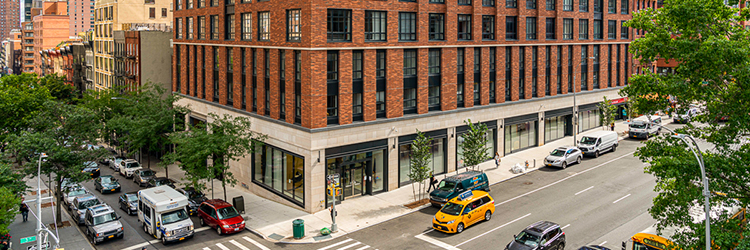News:
Shopping Centers
Posted: January 10, 2011
Commercial mortgage backed securities comeback slow but steady
Though virtually no commercial-mortgage-backed securities (CMBS) were issued in 2009, market watchers say some $10 billion of such securities poured onto the market this past year. That is far off the 2007 peak-an astronomical $230 billion-but encouraging nonetheless.
There were doubts in 2009 that CMBS would ever return, according to Kieran Quinn, vice chairman of the Walker & Dunlop real estate finance firm. "But enough has come back-the market will do about $10 billion and Freddie Mac will do another $10 billion on its own," said Quinn. Market observers had been saying for years that no one would be certain what commercial-mortgage-backeds could really do until the economy turned down.
"Now we know," Quinn said. "We did some things poorly, and some things better than others. We understand what works and what didn't work."
The CMBS market is functioning, according to Ed Adler, a managing director at Citigroup. "There is an ability to originate and pool new mortgages backed by commercial real estate," he said. "In 2009 no one really knew if that market still existed. In 2010 you could issue CMBS comfortably."
Indeed, Citigroup and Goldman Sachs completed a $789 million CMBS issuance in July. Quinn says he expects 2011 to be the true comeback year for CMBS. "Wells Fargo is doing one-off deals," Quinn said. "We've done a hotel deal in New Orleans with Citicorp. We have a couple of deals with Cantor Fitzgerald. PNC is starting up its securitization program, and KeyBank is right behind."
Quinn predicts that CMBS volume this year will be about $20 billion, but Paul Norris, head of structured products at Dwight Asset Management, forecasts twice that. "In 2011 you are going to see some decent origination," Norris said. "This year was about financing the best properties that were out there. Next year will be about going after some of these other properties that were passed over and had time to improve as far as pricing is concerned."
One of the big surprises in the 2010 deals was the importance of retail real estate. In the Citicorp-Goldman issue, close to 70 percent of the collateral was retail. For the Citicorp-Goldman issue expected to close before the end of this year, 30% to 40% of the collateral will be retail.
The big question is whether the structure of CMBS today has changed from the heady prerecession days. The difference between prerecession and postrecession CMBS is that the latter are simpler, Norris says. "Instead of having so many tranches in a deal, you have just three or four," he said. "That's the wave of the future."
Tags:
Shopping Centers
MORE FROM Shopping Centers
2024 Year in Review: William O’Brien, M.C. O’Brien, Inc.
What noteworthy transactions or deals from this year best exemplified key market trends or shifts? I would like to say there was an outstanding transaction for me this past year but 2024 was more a culmination of long-term relationships, most of which continued to transact. Deals were smaller in many cases but we saw robust leasing both on the agency side as well as on the tenant side.






.gif)


.jpg)
.gif)